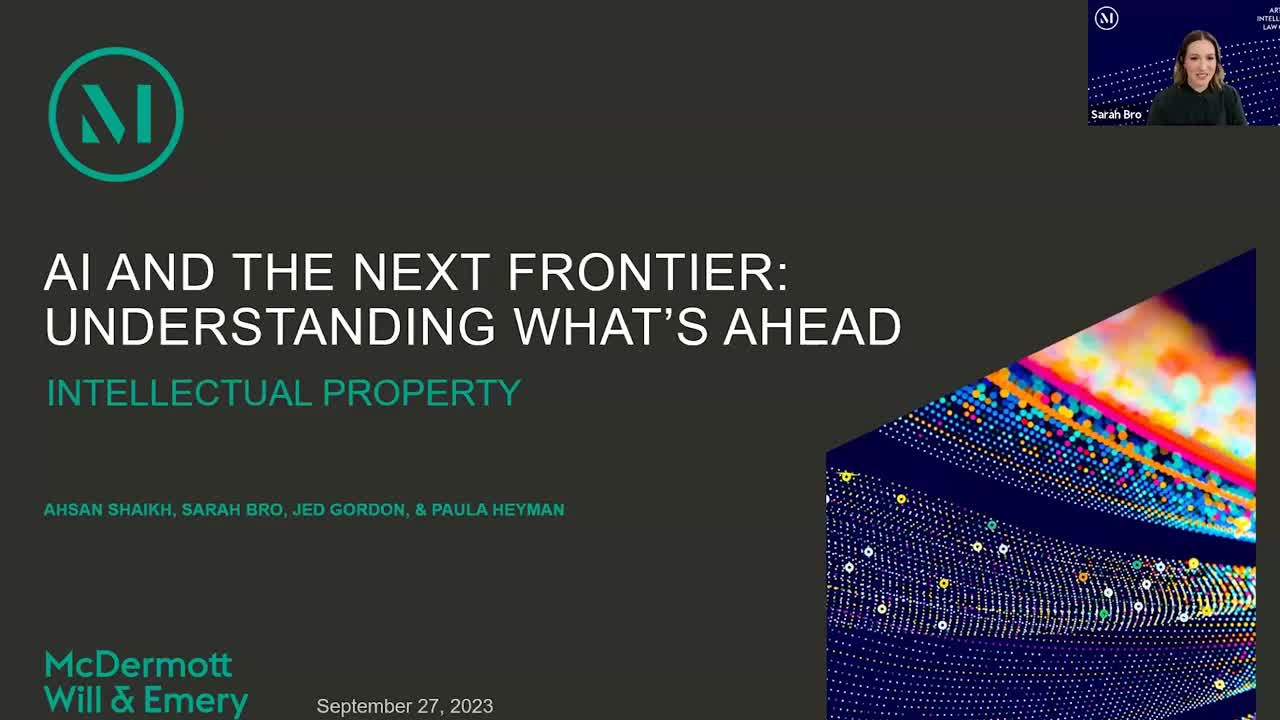Overview

During this webinar, IP Partners Sarah Bro, Jed Gordon, Paula Heyman and Ahsan Shaikh discussed the emerging regulatory and legal considerations surrounding artificial intelligence (AI)-assisted works and addressed potential hurdles to keep companies and their IP ahead of the AI curve.
Top takeaways included:
- The patentability of AI inventions versus AI-assisted inventions: Patents are granted to “individuals,” which courts have interpreted to mean natural persons only. The extent to which AI-assisted inventions may be patentable is an issue courts have thus far declined to examine. Since incorrect inventorship can be grounds for invalidating a patent, this is an open question that inventors and patent professionals should keep an eye on.
- Copyright issues touch on the registrability, ownership, input and output of generative AI: Similar to patents, copyrights require human authorship. Thus, as to AI output, courts and the US Copyright Office have made it clear that 100% AI-generated works are not copyrightable. For works created by a human with AI input, only the human-created elements may be copyrighted. As for AI input, pending class action lawsuits are determining whether training AI models by feeding them copyrighted works is infringement of those works or whether that practice constitutes fair use or is non-infringing.
- In addition to copyrights, AI-related litigation touches on various IP causes of action:
- Rights of Publicity: Generative AI can convincingly reproduce the likenesses and voices of individuals, which could lead to lawsuits for the unauthorized commercial use of a person’s identity. The lack of a federal cause of action for misappropriation of rights of publicity may also leave unanswered questions regarding enforcement.
- Patent Infringement: Developers of AI systems tend to not disclose any details, so it may be difficult for a patent owner to determine whether an AI system infringes its patent. Theoretically, however, one AI system developer could sue another based on how their models work.
- Trade Secrets: Developers may want to pursue trade secret protection for their AI systems given the confidential nature of such systems and the potential patent challenges under 35 U.S.C. §101 for AI inventions.
- For IP transactions, AI presents new diligence challenges: Buyers must consider whether a target’s proprietary IP is protectable, particularly if it was created by or disclosed to a generative AI model. The use of AI in a target business’s practices could also expose the buyer company to any of the above AI-related lawsuits. For instance, did an employee at the target company inappropriately disclose third-party confidential trade secret information to an AI model? Or did the target company rely on source code output by AI that infringes on a third party’s proprietary code or incorporates “copyleft” licensed open-source software?
Explore AI’s implications in more industries and service areas, and how you can seize opportunities and mitigate risk across the legal, business and operational areas of your organization, through our webinar series.